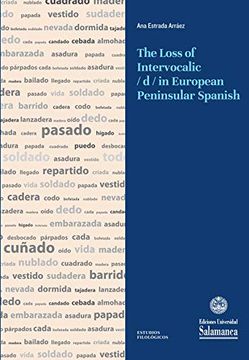Share
The Loss of Intervocalic (in English)
Varios Autores (Author)
·
Universidad Salamanca
· Paperback
The Loss of Intervocalic (in English) - Varios Autores
Filología española
$ 29.24
$ 48.73
You save: $ 19.49
Choose the list to add your product or create one New List
✓ Product added successfully to the Wishlist.
Go to My Wishlists
Origin: Spain
(Import costs included in the price)
It will be shipped from our warehouse between
Tuesday, June 11 and
Tuesday, June 25.
You will receive it anywhere in United States between 1 and 3 business days after shipment.
Synopsis "The Loss of Intervocalic (in English)"
Summary/ sinopsis: the loss of intervocalic/d/ is a very widespread phenomenon in European Spanish, where it appears in contexts in which it would be impossible in other spanish-speaking regions. Many studies address this subject from different perspectives, but they only offer a partial view of the situation in the iberian peninsula. The present work provides an overview of the phenomenon in European peninsular Spanish based on the data from two corporal that cover most of the territory, namely the Linguistic Atlas of the iberian peninsula (alpi) and the audible Corpus or rural spoken Spanish (coser). the study of these data, both geographically and with quantitative analyses, offers New insights into the situation and Evolution of the phenomenon. Table of contents/ índice: 1. Introduction. 1.1. Lenition in Spanish consonants: why/d/ | 1.2. State of affairs. 1.2.1. Usage-based theories and the role of Frequency. 1.2.2. The elision of intervocalic/d/ in previous studies. 2. First study: Linguistic Atlas of the iberian peninsula (alpi). 2.1. Corpus and method | 2.2. The data: maps and first analysis. 2.2.1. Contexts radio/Ada. 2.2.2. Contexts ido/ida (and Edo). 2.2.3. Contexts como/oda. 2.2.4. Ending –dera. 2.2.5. Context udo. 2.2.6. Three vowels in contact. 2.2.7. Other cases | 2.3. Summary. 3. Second study: audible Corpus of rural spoken Spanish (coser). 3.1. Corpus and method | 3.2. The data. 3.2.1. Contexts radio/Ada. Morpheme –dor. 3.2.2. Contexts ido/ida. 3.2.3. Lemmas todo and todavía. 3.2.4. Nada and cada | 3.3. Summary. 4. Analysis. 4.1. Individual analysis. 4.1.1. Geography and language contact. 4.1.2. Vocal context. 4.1.3. Stress position. 4.1.4. Grammatical nature. 4.1.5. Morphological boundary. 4.1.6. Grammatical category. 4.1.7. Number of syllables. 4.1.8. Consonantal environment. 4.1.9. Repetition. 4.1.10. Frequency | 4.2. Statistical analysis | 4.3. Summary. 5. Special cases. 5.1 diminutives | 5.2. Initial intervocalic position: the prepositon de ‘of’. 5.2.1. Preposition de in alpi. 5.2.2. Summary. 6. Conclusions. References appendices. Appendix 1: questions from alpi | appendix 2: summary of coser data (voronoi polygons) | appendix 3: random Forest method in detail list of maps, Pictures and tables
- 0% (0)
- 0% (0)
- 0% (0)
- 0% (0)
- 0% (0)
All books in our catalog are Original.
The book is written in English.
The binding of this edition is Paperback.
✓ Producto agregado correctamente al carro, Ir a Pagar.

